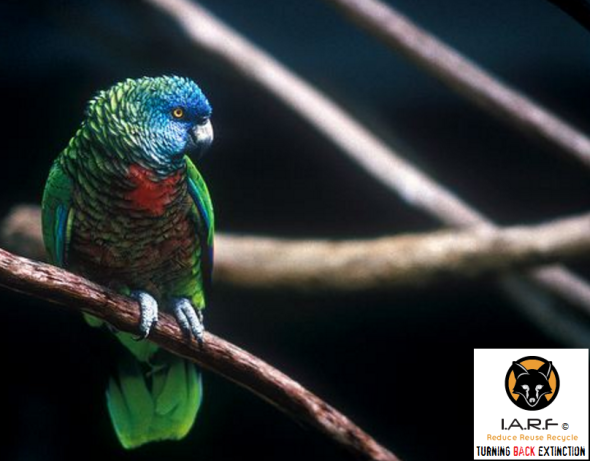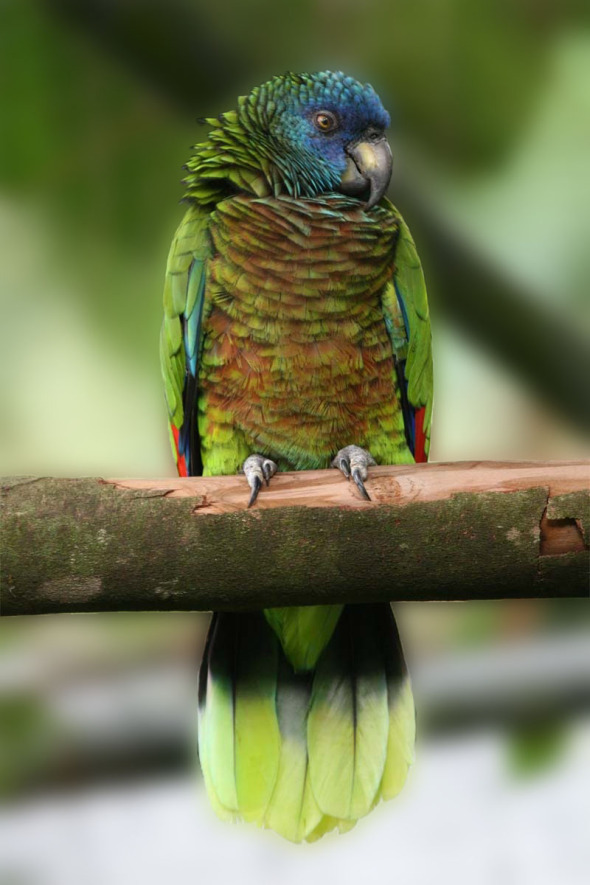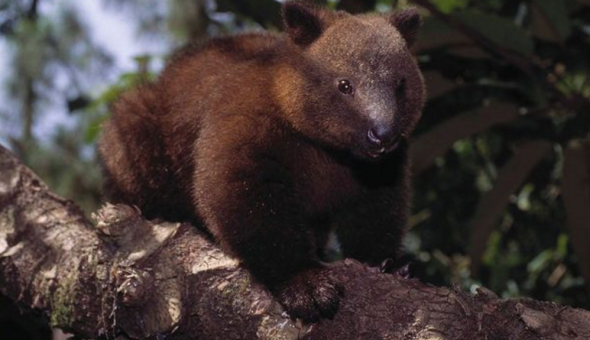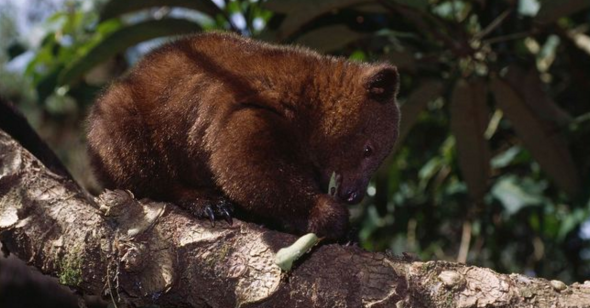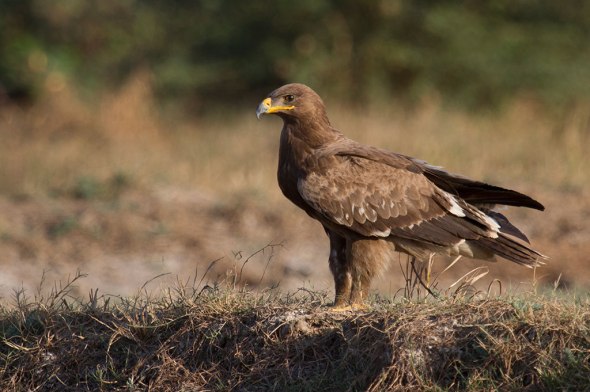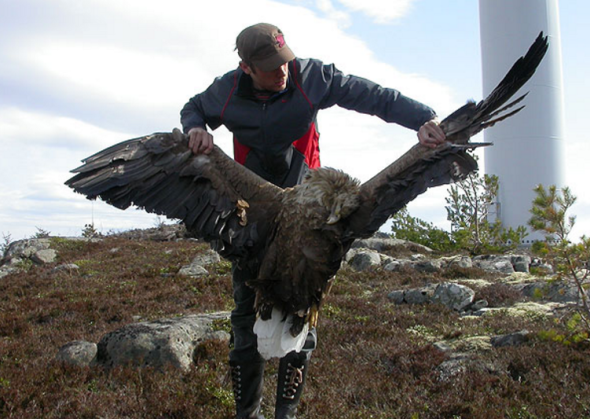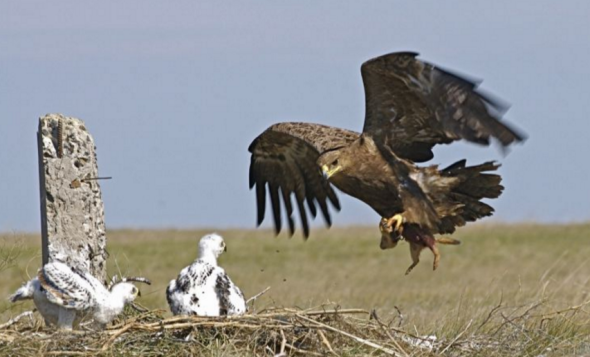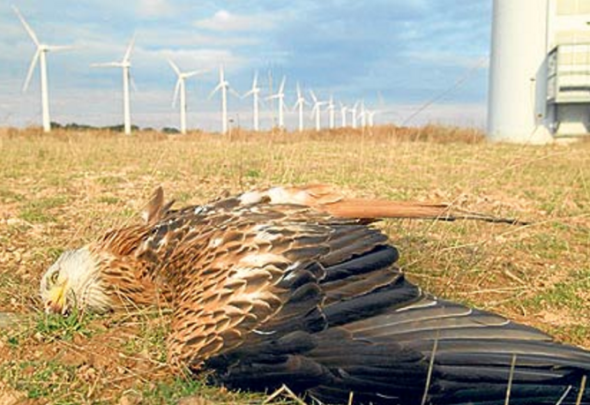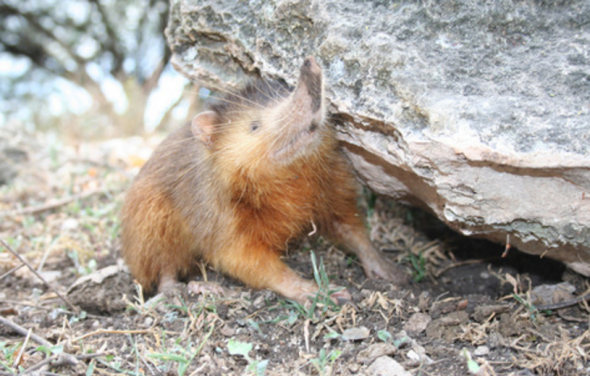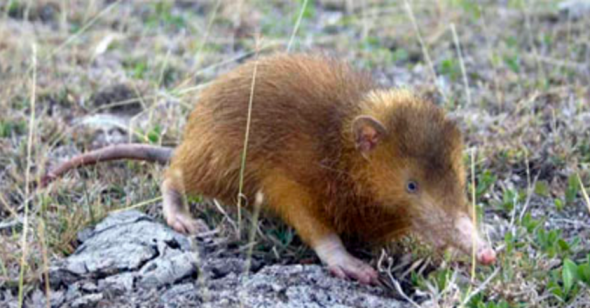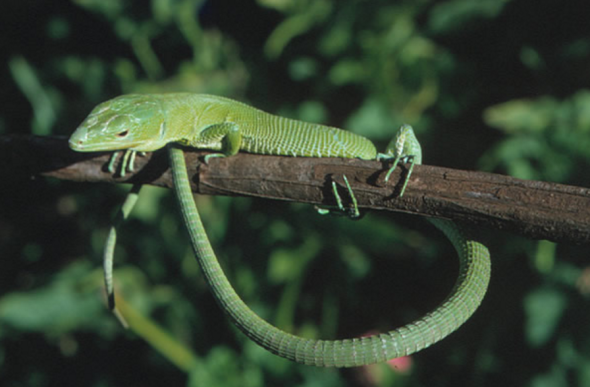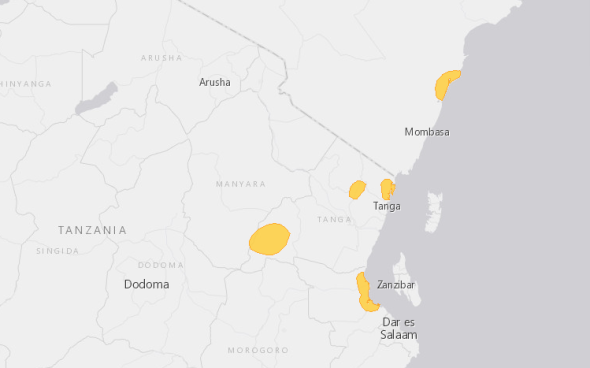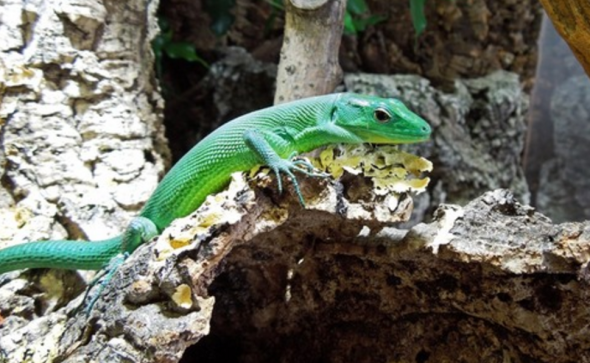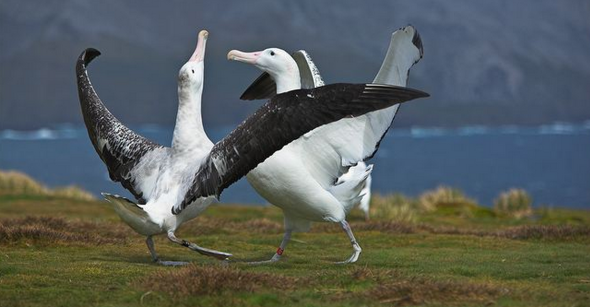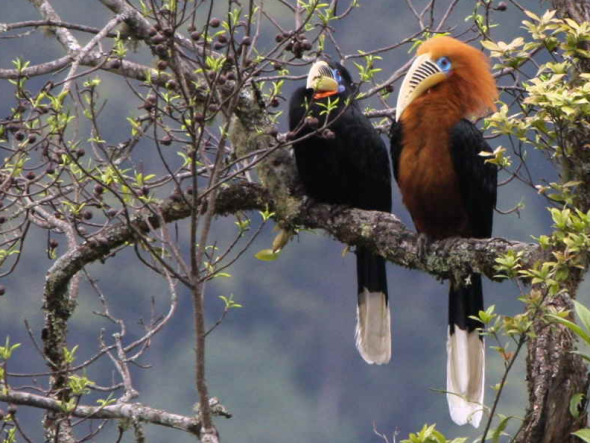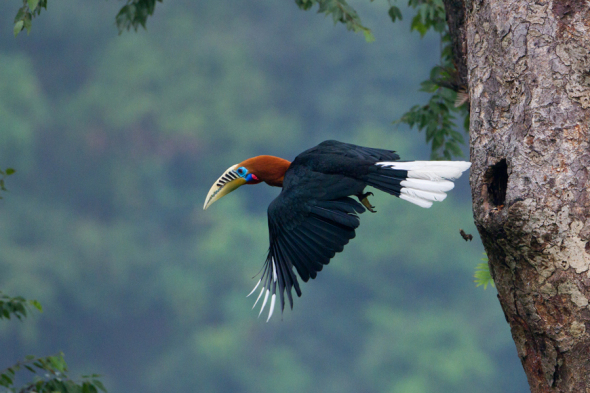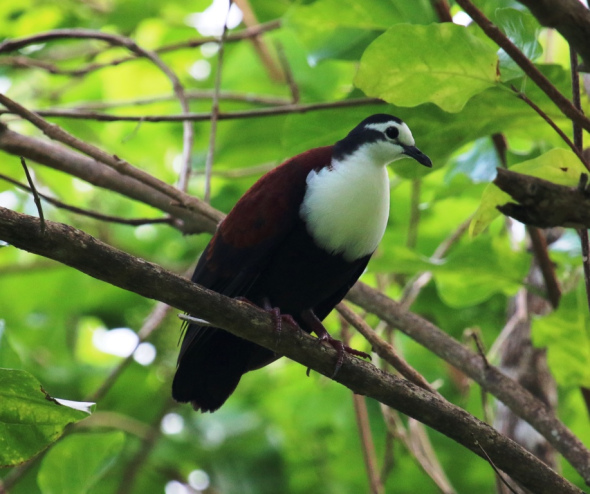Endangered Species Friday | Bubalus mindorensis | Asia’s Next Extinction!
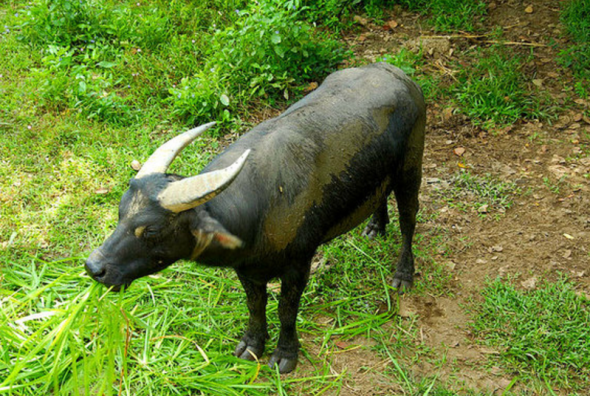
Endangered Species Friday | Bubalus mindorensis
This Friday’s (ESP) Endangered Species Post, I’m touching on a very undocumented species of buffalo that is so endangered - its extremely likely the species will go extinct within the next ten years maximum. (Photographer unidentified).
Listed as (critically endangered) the species was primarily identified back in 1888 by French born Dr Pierre Marie Heude (25 June 1836 – 3 January 1902) whom was a French Jesuit missionary and zoologist. Born at Fougères in the Department of Ille-et-Vilaine, Heude became a Jesuit in 1856 and was ordained to the priesthood in 1867. He went to China in 1868. During the following years, he devoted all his time and energy to the studies of the natural history of Eastern Asia, traveling widely in China and other parts of Eastern Asia.
Endemic to the Philippines B. mindorensis first came to the attention of environmentalists when conservationists began studying the Mindoro Water Buffalo in the early 1940’s of which they found insufficient data relating to the species. Unfortunately from 1986-1996 the species was then suddenly re-listed as (endangered).
Yet the Tamaraw had been known to overseas and native conservation scientists for over THIRTY YEARS of which today we’re now seeing a possible new extinction occurring within the Philippines. How is this possible, when scientists knew about the status of the species, why hasn’t a single zoo removed small populations to house in protective breeding captivity for later reintroduction into the same habitat, or new pastures?
Meanwhile from the year 2000 to 2008 the species was again (re-listed from endangered to critically endangered). Today the Tamaraw is now bordering complete extinction within the wild, and from what we know there is ‘possibly’ no protective captivity projects anywhere around the globe to preserve the species for future reintroduction in the wild. We do hope that we’re wrong?
From what we know based on the last census from 2013 (three years ago) there was noted within the wild only 105 mature individuals remaining. This equates to exactly 105-210 mature individuals (estimate). Within the past three years its very likely we have probably lost half of the remaining populations known, which could mean there is only 52-205 mature individuals remaining within the wild to date.
The species is not known to be fragmented, however populations are still declining. The major threat was once identified as hunting, although ‘allegedly’ isn’t known to be a threat now?. As a scientist and environmental crime CEO I find this very difficult to comprehend, due to the amount of horned ungulates which are being located throughout South East Asia. I must state though: my environmental crimes officers as yet haven’t located any Tamaraw horns or trophy heads.

Image: Tamaraw. Credits: Ruisu Fang.
Formerly, Tamaraw were found across the whole of Mindoro from sea level to the high peaks (to over 1,800 m), inhabiting open grassland or forest glades, thick bamboo-jungle, marshy river valleys, and low to mid-elevation forests. The species is currently confined to a few remote areas over 200 m, and is most often recorded in secondary forest and mixed forest/grassland.
Tamaraw are largely solitary, although females occur with offspring. Males and females occasionally associate temporarily throughout the year, which is similar to other bovines species, such as African buffalo, banteng and gaur. The solitary nature of the species is probably an adaptation to forest habitats, where large groups would prove to be a hindrance. Tamaraw feed primarily on grasses, as well as young bamboo shoots, in open grasslands, resting within tall grasses or dense forest. Although formerly diurnal, Tamaraw have become largely nocturnal due to human encroachment and disturbance.
“WE’RE LOSING THEM, AND FAST”
I do find it quite disheartening to know that the Philippines “national animal symbol” isn’t really being preserved or even protected from nearing complete extinction, although there are some projects out there that are helping to save the species from extinction, the problem is of course, as usual, funding!. One would think that a country that’s so wealthy, and a country that has introduced so many animal, wildlife and environmental laws would at least be fighting to protect the tamaraw. From what I have read and heard from the locals - they are trying their utmost hardest, unfortunately not everyone thinks the same as many kind Filipinos.
THREATS
The main current threat to the Tamaraw is habitat loss due to farming by resettled and local people, with a high human population growth rates in and around its remaining habitat. In some areas, fires set for agriculture are a threat to the species’ habitat. Cattle ranching and farming activities pose a number of threats, including the risk of diseases spreading to the Tamaraw from livestock and burning of pastures leading to a reduced number of palatable grass species.
Historically, Tamaraw were hunted for both subsistence and sport, which led to a period of drastic decline in numbers of individuals and populations. Hunting was carefully regulated prior to World War II, but since then a growing human population, logging operations, ranching, and widespread availability of firearms on Mindoro have caused a dramatic decline in numbers.
Since the 1980s, sport hunting has reduced due to a decline in the Tamaraw population, closure of nearby ranches, and more intensive patrolling and awareness activities since the establishment of the protected area. International trade in this species or its derivatives has not been reported. Although protected by law, the illegal capture and killing of this species continues.
While its currently “illegal to poach or hunt” the species “we believe some are still being poached within the Philippines to provide horns to both China and Viet Nam”. As yet there is NO EVIDENCE to back these claims up, however I.A.R.F.A environmental crimes officers have located in Viet Nam a lot of ‘counterfeit Rhinoceros horn’, which when analysed, has proven to us the horn[s] most certainly aren’t from rhinos, but from a buffalo species. So this area of the counterfeit rhino horn trade still needs intensive investigation.
The current plight of the tamaraw is not looking good, and from our own investigations and third party environmental investigations relating to the species - extinction is very likely to occur in around five to ten years (if that).
“THE TAMARAW IS ASIA’S NEXT EXTINCTION”
Thank you for reading.
Dr Jose Carlos Depre. PhD. MEnvSc. BSc(Hons) Botany, PhD(NeuroSci) D.V.M.
Environmental, Botanical & Human Scientist.
Endangered Species Friday: Macrotis lagotis | Bandicoot.
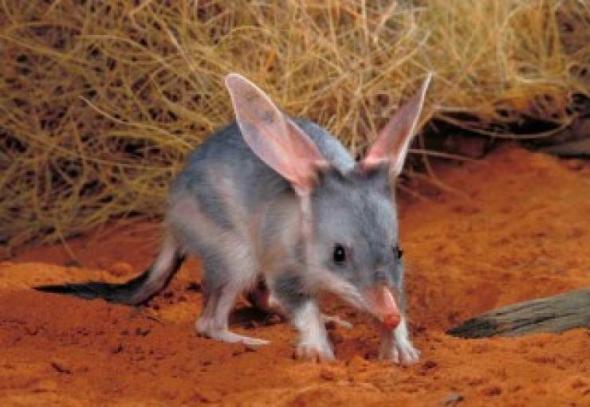
Endangered Species Friday | Macrotis lagotis
This Fridays (ESP) [Endangered Species Post] I touch up on the Macrotis lagotis, commonly known as the Rabbit-eared Bandicoot identified back in 1837 By Dr Reid. (Image credit unknown, explorer unknown).
The Rabbit Eared Bandicoot is the fifth Australian marsupial that I’ve documented on since establishing the (Endangered Species watch Post), covering now over 403 species of animals (worldwide) in exactly 5 years. From 1965 very little was actually known about the Rabbit Eared Bandicoot, despite the fact it was formally identified way back in the 1800’s.
Unfortunately when scientists eventually managed to re-locate the species, they found the animal was in fact nearing extinction within its endemic wild. Listed then as (ENDANGERED) the species almost went extinct from the 1980’s - 1900’s. Fortunately environmental scientists worked hard to preserve this rather unusual animal. From 1990 the species was still listed as (endangered - and nearing complete extinction within the Australian wild).
Fortunately from 1994-1996 species recovery programs increased populations within the wild. Come 1996 the species was re-listed as (vulnerable). Commonly known as the ‘bilby’, M. lagotis once inhabited some 70% of Australia. Wild populations are now restricted predominantly to the Tanami Desert (Northern Territory), the Gibson and the Great Sandy Deserts (Western Australia), and one outlying population between Boulia and Birdsville (south-west Queensland). The bilby has gone extinct from portions of southern Queensland within the last few decades.
However despite numerous conservation actions that have been aiding and increasing bilby populations, they are now on the decrease; slowly, but surely, for how long though is another story. Endemic to Australia (Northern Territory, Queensland, and Western Australia) its believed there are no fewer than 500 individuals on Thistle Island, 500 in Arid Recovery, 100 in Venus Bay, 200 in Peron, 40 in Scotia, 200-500 in Queensland.
There are fewer than 1,000 individuals in the Northern Territory and 5,000-10,000 in non-reintroduced Western Australia. The global population might be under 10,000 individuals. The species is wide-ranging and patchily distributed. The population estimates of bilbies in the Northern Territory and Western Australia are very approximate, as there are no published numbers in peer-reviewed journals. It is known from aerial surveys that bilby signs (diggings) in the areas where bilbies are persistent occur less than 15 to 20 km apart.
“TEN THOUSAND INDIVIDUALS REMAINING”
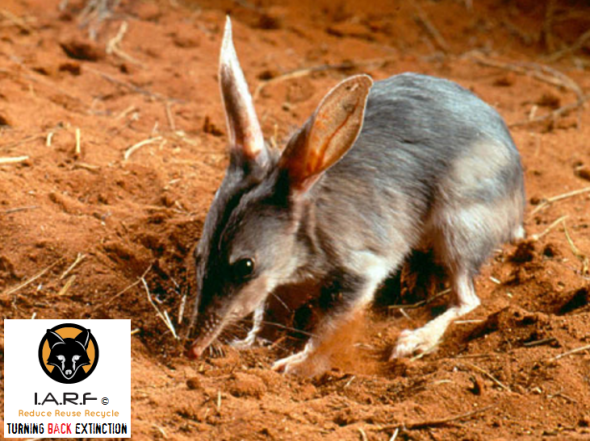
Image: Bilby, Australia. Photographer unknown.
Bilby populations are not known to be seriously fragmented, and from what I am aware the species is protected under CITES APPENDIX I (Convention on International Trade in Endangered Species of wild Fauna and Flora).
“WHAT’S WITH THE LARGE EARS?”
You’ll find that many small and even large animals that live within extremely arid and hot countries, and are active during the daytime will host large fan like ears. Without these large cooling like rabbit ears many species of animals wouldn’t be able to radiate heat away from its most important organs - being the brain. Smaller ears would most certainly result in the mammal dying from massive heat stroke, and dehydration. However due to the lack of research on the bilby, we still don’t know for sure if these massive ears do indeed help keep the species cool.
Bilby ears are almost naked, which ‘may be for temperature regulation’, but because the research hasn’t been done we don’t actually know for sure. One thing that scientists studying bilbies do agree on is the variability in behavior between bilby populations living in different conditions around Australia. They’ve adopted different diets, burrows, breeding habits and social networks, and this adaptability has been the key to their survival.
THREATS
The current bilby distribution is associated with a low abundance or absence of foxes, rabbits, and livestock. Major threats relate to predation from foxes, habitat destruction from introduced herbivores, and changed fire regimes. Predation pressures “from feral cats” and dingoes occurring in association with pastoral practices may be a threat to the bilby. Feral cats have affected the success of reintroduced populations. Additional threats to the bilby include mining and other development, and road mortality.
BILBY FACTS
When: Bilbies are opportunistic breeders waiting until conditions are good, rather than particular seasons.
Where: In the wild, bilbies are now limited to patches of the northern desert areas of NT and WA. and a tiny isolated remnant population in SW QLD. They are also found in sanctuaries and breeding colonies in WA, NSW, SA and QLD.
Other info: The name bilby comes from the Yuwaalaraay people of northern NSW. They are important in Aboriginal culture and were a common food resource. Bilbies live up to 7 years in the wild and 11 years in captivity. They are considered endangered.
WHAT DO BILBIES EAT?
Bilbies are omnivores and eat insects, seeds, bulbs, fruit and fungi. Most food is found by digging in the soil. Big ears quickly detect insect prey, which they catch with their long tongue.
Thank you for reading.
Every Monday and Friday I.A.R.F publishes in the last (6 months of each year) an Endangered Species Post. Furthermore every Wednesday I.A.R.F also publishes investigative articles relating to wildlife, environmental and animal concerns. For more information please subscribe to our news feed for free here www.speakupforthevoiceless.org
Dr Jose C. Depre PhD. MEnvSc. BSc(Hons) Botany, PhD(NeuroSci) D.V.M. Environmental & Human Science.
Endangered Species Friday: Amazona versicolor
Endangered Species Friday: Amazona versicolor
This Fridays Endangered Species Post (ESP) I touch up briefly on the St Lucia Amazon as the species is commonly known. Image credits Philippe Feldman
The species was identified back in 1776 by Dr Philipp Ludwig Statius Müller (April 25, 1725 – January 5, 1776) who was a German zoologist. Dr Statius Müller was born in Esens, and was a professor of natural science at Erlangen. Between 1773 and 1776, he published a German translation of Linnaeus’s Natursystem.
The supplement in 1776 contained the first scientific classification for a number of species, including the dugong, guanaco, potto, tricolored heron, umbrella cockatoo, red-vented cockatoo, and the enigmatic hoatzin.
Dr Muller was also an entomologist. Müller died in Erlangen. He is not to be confused with Salomon Müller (1804–1864), also an ornithologist, or with Otto Friedrich Müller. Note that the family name is actually spelled without the umlaut, then and now.
The Saint Lucia Amazon is listed as (vulnerable) which was nearing (endangered), native to Saint Lucia. From 1988 the species was first listed as (near threatened), however, unfortunately from 1994-2016 the species was re-listed as (vulnerable). Locals commonly refer to the species as the; Saint Lucia Amazon, or the Saint Lucia Parrot.
Populations are considered to be extremely low, although now allegedly increasing. A decade ago the then current known population rate stood at some 350-500 individuals, this generally equates to some 230-330 ‘mature individuals’. This number was actually considered quite low for any species which technically should see the St Lucia listed as (critically endangered).
St Lucia Amazon Parrot is situated on the island of St Lucia in the eastern Caribbean where it is known locally as ‘Jacquot’. The Government of the island became aware of the plight of its endemic parrot population in 1975 when Durrell first became involved with St Lucia, and the Trust was asked to help by starting a captive breeding programme for the species at its Jersey headquarters. In 1989 a pair of captive-bred parrots returned to their native home with the Prime Minister of St Lucia.
The St Lucia Amazon’s natural habitat is subtropical or tropical moist montane forest, diet consists of fruit and insects, of which clutch size is around 3-4 eggs. The species is threatened by habitat loss. St Lucia Amazon species have declined from around 1000 birds in the 1950s to 150 birds in the late 1970s. At that point a conservation program began to save the species, which galvanized popular support to save the species, and by 1990 the species had increased to 350 birds.
Although the population in Saint Lucia is small it is still expanding. To date after conservation efforts increased on the island of St Lucia due to destructive storms and hurricanes populations were increased to some 2,100 mature individuals. Please see video below.
The story of this birds salvation from the brink of extinction (including the influence of conservationist Paul Butler) is told in Chapter 7 of the 2010 book “Switch: How to Change Things When Change is Hard” by Chip & Dan Heath.
Listed on Cites Appendix I and II, below I’ve included a list of identified threats associated with the St Lucia Amazon Parrot.
MAJOR THREATS
The human population of St Lucia is growing at a considerable rate, increasing pressure on the forest and resulting in habitat loss. Selective logging of mature trees may significantly reduce breeding sites, and hurricanes, hunting and trade pose further threats. There have been recent efforts to lift the moratorium on hunting within forest reserves, which would seriously threaten this species.
Image: St Lucia Amazon
Its truly wonderful to know that conservation efforts have brought this species back from the brink of near extinction. The Durrell Wildlife Conservation Trust is one trust that I admire, and have donated many hundreds of euros to since I was a teenager. Durrell have worked wonders across the globe working to help primates, frogs and countless birds, not forgetting many other animals..
The Durrell Wildlife Conservation Trust is one NGO that I myself will be leaving money to in my will. Why? Because they deserve the money for the work they put into preserving our flora and fauna. You can donate to the Durrell Wildlife Conservation Trust here: https://www.durrell.org/wildlife/shop/donation/
Thank you for reading and have a nice day.
Dr Jose C. Depre PhD. MEnvSc. BSc(Hons) Botany, PhD(NeuroSci) D.V.M.
Chief Environmental and Botanical Scientist.
Follow me on Twitter here: https://twitter.com/josedepre11
Facebook: https://www.facebook.com/InternationalAnimalRescueFoundationAfrica/?fref=ts
Endangered Species Friday: Dendrolagus dorianus | Cuddly Teddy Bear Facing Extinction.
Endangered Species Friday: Dendrolagus dorianus
This Friday’s (Endangered Species Post) [E.S.P] I touch up on this rather unusual species of tree kangaroo that’s rarely mentioned within the world of conservationism. Furthermore I also wish to set the record straight about these wonderful and utterly adorable species of mammals which many people seem to believe are endemic ‘just to Australia’. This particular species is actually native to Papua New Guinea, generically identified as Dendrolagus dorianus. (Image credits: Daniel Heuclin).
Listed as (vulnerable), the species was primarily identified by Dr Edward Pierson Ramsay (3 December 1842 – 16 December 1916). Dr Ramsay was an Australian zoologist who specialized in ornithology. Among organisms Dr Ramsay named are the pig-nosed turtle, giant bandicoot, grey-headed robin and Papuan king parrot.
D. dorianus lives within a country of immense cultural and biological diversity. A country known for its beaches, coral reefs and scuba diving. Not forgetting the countries inland active volcanoes. Locals commonly identify the animal as the; Doria’s tree kangaroo or the unicolored tree kangaroo. Doria’s tree kangaroo is within the order of Diprotodontia, and the family identified as Macropodidae.
Since 1982 to 1994 the species has remained at [vulnerable level] of which back in 1996 a further assessment of the species noted a possible population decline. The decline prompted environmentalists to notch the species further up the list of [vulnerable species]. However a survey in 2008 concluded the species hadn’t as yet qualified for any further threatened status (E.g) endangered (which would unfortunately be the next listing should threats not decline in the wild).
Scientific research and population evaluations have shown a staggering 30% decline of overall wild populations which is quite a large population decrease, although “allegedly not concerning enough as yet to reclassify this particular specimen as endangered”. Yes its unfortunate that the current news relating to (decreasing populations), is indeed factual, and its likely (as explained), that should threats in the wild not decrease anytime soon, we could see a new extinction occurring in as little as ten years “if not sooner”. Populations are not known to be ‘fragmented’.
Image: Rare glimpse of the Doria Tree Kangaroo.
Identified in 1883 there are very few conservation actions actually known that could help increase declining population sizes which I myself find somewhat frustrating, not to mention perplexing, especially when one takes into consideration the current level of threats associated with this specie in Papua New Guinea.
Research proves the species inhabits some several protected national parks [NP’s], unfortunately extreme hunting activities I.e illegal poaching is still ongoing. While Anti Poaching Operations [APU’s] do exist, the fact of the matter is that Cites (The Convention on International Trade of Endangered Species Wild Flora and Fauna), still hasn’t listed the species as (protected or endangered) on either Appendix I or Appendix II.
Image: Extinction may occur in a decade of not sooner.
To date the current population level is unknown, furthermore reproduction is also believed to be incredibly low and poor.
MAJOR THREATS
Known threats relate to the bush meat trade, which if not controlled will unfortunately push the species into extinction. Hunting with dogs, unregulated/illegal hunting is quite high and problematic within the region. Finally the species absolutely hates canines of which when threatened emits depressed vocalizations. Future threats have been identified as habitat loss and degradation.
The Doria’s tree kangaroo lives at elevations of some 600-3,650 meters of which is mostly nocturnal and a solitary animal. Dr Ramsay named the species after Professor Marquis Giacomo Doria (1 November 1840 – 19 September 1913) whom was an Italian naturalist, botanist, herpetologist, and politician of Italy.
Doria’s tree kangaroo is probably one of the largest species of tree kangaroos on the planet, although this is somewhat debatable. Weighing in at 6.5-14.5 kilograms, length is around 60-80 centimeters, with a tail length of some 40-70 centimeters. With a large tail, dense black and brown fur, large powerful claws and stocky build, the appearance of this specific animal almost appears to look like a medium sized bear.
Diet consists of leaves, flowers, fruits and buds, there is no evidence that suggests or points to any form of meat eating either. Gestation period of females is around thirty days, of which the ‘single young baby’ will remain in mothers pouch for around ten months.
There really is limited information about this specific species which could be due to the fact the species is actually very rare, nocturnal, and lives at moderate to high elevations within dense montane forests. I am asking the public to please share this article far and wide to help us push more awareness of this species into the public domain, which we hope will encourage (Cites) to protect the species sooner rather than later.
This article is dedicated to Ms Toni Devine, a wonderful young lady that absolutely adores these wonderful species of animals, who wouldn’t adore them, they are truly remarkable, intelligent, and in way more like cuddly teddy bears.
Chief Environmental & Botanical Officer
Dr Jose C. Depre
Environmental Crimes Investigator
Follow me on Twitter here: https://twitter.com/josedepre11
Follow us on Facebook via clicking the link below:
https://www.facebook.com/InternationalAnimalRescueFoundationAfrica/
Endangered Species Friday: Aquila nipalensis | Wind Farms Pushing Steppe Eagle into Extinction?
Endangered Species Friday: Aquila nipalensis
This Fridays (ESP) - Endangered Species Post is dedicated to the A. nipalensis, commonly known as the Steppe Eagle, identified back in 1833. Image credit: Kartik Patel
The Steppe Eagle was formally identified by Dr Brian Houghton Hodgson (1 February 1800 or more likely 1801 – 23 May 1894) was a pioneer naturalist and ethnologist working in India and Nepal where he was a British Resident. He described numerous species of birds and mammals from the Himalayas, and several birds were named after him by others such as Edward Blyth.
Dr Brian H. Hodgson was a scholar of Tibetan Buddhism and wrote extensively on a range of topics relating to linguistics and religion. He was an opponent of the British proposal to introduce English as the official medium of instruction in Indian schools. Had Dr H. Hodgson not introduced English into the many Indian schools, its very likely very few Indian citizens would today know how to speak the English language.
A. nipalensis is listed as (endangered), although its likely the predatory eagle will soon be relisted as (critically endangered), should conservation efforts not improve the current status of this remarkable bird of prey, however this particular bird is somewhat of a mystery.
The major reason why this species is listed as (endangered) which was only recently, is primarily due to wind farming of which birds are reported to fly directly into large structural turbines, which unfortunately, results in their death, or serious injury. Birds that are rescued suffering serious trauma are rarely released back into the wild, or make a full recovery.
From 1988 to 2000 the species was listed as (lower risk). Then from 2003 to 2014 the species remained at (least concern). A risk assessment conducted last year (2015), concluded that the species qualified for (endangered status). Which is somewhat concerning. To date we know the species has already been pushed into regional extinction in the countries identified as; Moldova and Romania. Today the species still remains endemic within the following countries;
Afghanistan; Albania; Armenia; Azerbaijan; Bahrain; Bangladesh; Bhutan; Botswana; Bulgaria; China; Congo; Djibouti; Egypt; Eritrea; Ethiopia; Georgia; Greece; India; Iran, Islamic Republic of; Iraq; Israel; Jordan; Kazakhstan; Kenya; Kuwait; Kyrgyzstan; Lebanon; Malawi; Malaysia; Mongolia; Myanmar; Namibia; Nepal; Oman; Pakistan; Palestinian Territory, Occupied; Qatar; Russian Federation; Rwanda; Saudi Arabia; Singapore; South Africa; South Sudan; Sudan; Swaziland; Syrian Arab Republic; Tajikistan; Tanzania, United Republic of; Thailand; Turkey; Turkmenistan; Uganda; Ukraine; United Arab Emirates; Uzbekistan; Viet Nam; Yemen; Zambia and finally Zimbabwe.
Aquila nipalensis is also a vagrant visitor to most of Northern Europe, Eastern Europe, South East Asia, Southern and Eastern Africa, ranging from Spain; Norway; France; Germany; Finland, Korea; Somalia; Slovakia Etc. Continued rate of decline is (unknown), which is concerning bird lovers and conservationists. Data recorded from the last assessment back in (2015), stated that populations are declining very rapidly.
Population Uncertainty
There seems to have been some perplexing information from the last assessment (before 2015’s) relating to population trend conducted we believe in (2010 or 2012). However the (2015) assessment has confirmed that the current population trend may stand at some: 100,000-499,999 (which is an estimate band or population band). Populations are not known to be (seriously fragmented). Surveys conducted back in (2001) placed the number of pairs at ‘80,000 pairs or 160,000 mature individuals’. Unfortunately the (European population) is estimated to be standing at 800-1,200 pairs in total.
Bird-Life International (2015) estimated that Europe holds the lowest population density standing at some 9%. So a very preliminary estimate of the global population size is 17,800-26,700 mature individuals. A further assessment back in (2001) relating to the European trend stated “160,000 mature individuals was much lower than previously believed”. So as one can see ‘population uncertainty’ is the second likely reason why the species has been re-listed as (endangered). Not forgetting being rather confusing at times too.
Latest Population Assessment Estimate
The latest, and most current population assessment estimate states numbers range (in total) at 31,372 (26,014-36,731) which equates to 62,744 (52,028-73,462) mature individuals or 94,116 (78,042-110,193) individuals. The population is placed in the band 100,000 to 499,999 mature individuals. It must be noted that 100,000 to 499,999 is not the true population count, but more the ‘band that the species currently stands at/qualifies for’.
Habitat destruction, agriculture, conversion of Steppe Eagle land for farming, persecutions, but most worrying is wind-farming that is “seriously threatening the species as we know it today”. Collisions with wind-turbines is quite a serious concern as the Steppe Eagle is not exactly a small bird, and when hunting, especially within converted land that hosts wind farms, Steppe Eagles are either killed or seriously injured to the point that they can never be rehabilitated back to the wild. Night collisions are reported more than day collisions.
Image: White tailed Eagle killed after colliding with a wind farm in the background.
The image above depicts a White Tailed Eagle that was located dead after a suspected collision with a wind turbine. As one can clearly see these Eagles are not small, nor are wind turbines. Unfortunately birds come off the worst as we humans crave more and more greener energy. The only real reasonable solution here would be to now lobby governments and industries to build wind farms away from ‘all bird habitat’, or at sea. Unfortunately, again this is easier said than done. While at sea wind turbines are being blamed for whale beaching’s due to turbine vibrations, meanwhile birds are mostly, sadly dying when hitting these gigantic steel/carbon structure’s.
Steppe Eagles migrate, and are said to be closely related to the subspecies Aquila rapax. Steppe Eagles are around 25-31 inches in length, with a mean wingspan of 5.1-7.1 feet. Females weigh 5-10 lbs, while males weigh in at around 4.4 to 7.7 lbs. Steppe Eagles are said to breed mainly from Romania of which the species is currently (regionally extinct) within the country. Further evaluation of breeding behavior states the species breeds in Central Asia, Mongolia to Africa, with further breeding occurring within Eastern Europe. Females lay on average 1-3 eggs within a clutch.
Image: Credited: Peter Romanow (Germany).
Major Threats
Listed on the (Convention of International trade in Endangered Species wild flora and fauna - Cites), Cites Appendix II. Threats are listed below for your information.
The species has declined in the west of its breeding range, including extirpation from Romania, Moldova and Ukraine, as a result of the conversion of steppes to agricultural land combined with direct persecution. It is also adversely affected by power lines and is very highly vulnerable to the impacts of potential wind energy developments. It was recently found to be the raptor most frequently electrocuted by power lines in a study in western Kazakhstan. When one views the sheer size of these massive birds of prey, one can clearly envisage just how easy they can fall prey to hitting these massive carbon wind structures, and power lines,
Young eagles are taken out of the nest in order to sell them to western European countries. A decline in the number of birds and a reduction in the proportion of juveniles migrating over Eilat, Israel began immediately after the Chernobyl nuclear accident in 1986, leading Yosef and Fornadari (2004) to suggest that the species may have been affected by radioactive contamination. This species is vulnerable to the veterinary drug Diclofenac too. Read more here on Chernobyl.
CONCERNING DATA ON CHERNOBYL AND LOW BIRD SPERM RATE: https://www.audubon.org/news/chernobyls-radiation-seems-be-robbing-birds-their-sperm
Wind Farming | Eagles
Wind energy is the fastest growing source of power worldwide according to the World Bank. China plans a 60% increase in the next three years and the US a six-fold jump by 2030. The EU aims to produce 20% of its energy through renewables by 2020 - much of this is from wind. Will this huge expansion of wind farms have a serious impact on bird life? It looks likely, especially where birds habitat is being encroached onto by such developments.
The U.S. Fish and Wildlife Service (FWS) estimates that 440,000 birds are killed in collisions with wind turbines each year; without stronger regulation, says the American Bird Conservancy (ABC), the annual toll will exceed one million by 2030. To address this issue, the U.S. Department of the Interior has released voluntary guidelines to help developers minimize the impact of wind energy projects on bird habitat and migration. Developed over five years with an advisory committee that included government agencies, the wind energy industry, and some conservation organizations, the guidelines are intended to ensure compliance with federal laws such as the Endangered Species Act—although the rules allowing them to do so are controversial.
Read more here: http://hqinfo.blogspot.co.uk/2012/11/bird-collision-deaths-wind-farms.html
Image: Red Kite killed found dead after colliding with a wind-turbine.
There are reasons why birds are likely to be affected by wind farms. Wind developments tend to be placed in upland areas with strong wind currents that have a lot of potential to generate energy. Birds – particularly raptors like eagles or vultures – use these currents as highways – and so are likely to come into contact with the turbines. It’s not just the turbine blades that pose a risk to birds; research indicates that wind developments can disrupt migration routes. What’s more, foraging and nesting habitat can also be lost when turbines are put up.
Despite these concerns, the current body of research suggests wind farms have not significantly reduced bird populations. Several studies suggest birds have the ability to detect wind turbines in time and change their flight path early enough to avoid them. And one small study found no evidence for sustained decline in two upland bird species on a wind farm site after it had been operating for three years. Another found that wild geese are able to avoid offshore wind turbines. (Geese though fly at daytime, and are not predatory day and nighttime carnivorousness hunters).
A large peer-reviewed study in the Journal of Ecology monitored data for ten different bird species across 18 wind farm sites in the UK. It found that two of them- curlew and snipe – saw a drop in population during the construction phase, which did not recover afterwards. But the population of the other eight species were restored once the wind farms were built.
Read more here: http://www.carbonbrief.org/bird-death-and-wind-turbines-a-look-at-the-evidence
The current fate relating to the Steppe Eagle is somewhat worrying. Agriculture, persecution, young theft for trade, and wind - turbine farming is all but concerning plundering the species into further threatened status. After reading many studies dating back to 2012 regarding wind turbines, and whether they were indeed responsible for bird deaths, 2012 evidence didn’t really show much to prove that birds were affected. However after reading the ‘damning evidence relating to the Steppe Eagle’, its without a doubt that wind farms are most certainly ‘impacting on this species and others’ locally and internationally. The question is how do we deal with this problem?
We need wind to generate more greener energy thus decreasing our carbon emissions. Furthermore we also need birds of prey to control rodent, insect, and general pest control. Large birds of prey are also very useful within Anti Poaching operations, and act as the eyes and ears for both farmers and anti poachers. While there is no evidence to prove my own suspicions here, I do believe that certain bodies within government are being forced to ignore ongoing issues with wind farms and bird collisions. The excuse that birds can quickly change course is indeed factual to some degree, well, only if the bird is flying during daytime hours. Unfortunately most birds of prey also fly and hunt at night. So how is one supposed to change their course (at nighttime when unable to see the turbine in time)?
Please view the videos below for more information.
BIRD OF PREY | TURBINE COLLISIONS
STEPPE EAGLE
Thank you for reading, please share and help create more noise about this subject before time runs out.
Dr Jose. C. Depre PhD. MEnvSc. BSc(Hons) Botany, PhD(NeuroSci) D.V.M.
Environmental, Botanical and Human Science
Endangered Species Friday: Solenodon paradoxus | Extinction is Imminent.
Endangered Species Friday: Solenodon paradoxus
This Friday’s (Endangered Species Post) E.S.P, I touch up again on the Hispaniolan Solenodon, scientifically identified as Solenondon paradoxus. Image credit: Mr Jose Nunez-Mino. My reasons for re-documenting on this species is primarily due to my belief that extinction is now most certainly imminent. Therefore for that reason I think its critical that we all make as much noise as possible for this little one due to is importance within the theater of conservation, and because its one of very few mammals that do actually host a venomous side to them.
Written by Dr Jose C. Depre; Botanical and Conservation Scientist.
Solenondon paradoxus was identified back in 1883 by Dr Johann Friedrich von Brandt (25 May 1802 – 15 July 1879) was a German naturalist. Brandt was born in Jüterbog and educated at a gymnasium in Wittenberg and the University of Berlin. In 1831 he was appointed director of the Zoological Department at the St Petersburg Academy of Sciences, where he published in Russian. Brandt encouraged the collection of native animals, many of which were not represented in the museum. Many specimens began to arrive from the expeditions of Severtzov, Przhevalsky, Middendorff, Schrenck and Gustav Radde.
Listed as (endangered) the species is endemic to the Dominican Republic; Haiti. Back in 1965 the species was re-located and reassessed of which scientists agreed the species ‘required watching due to concerns relating to low population levels’. Unfortunately, and despite the species then being known as severely threatened, from 1982-1996 the Solenondon paradoxus was re-listed as (endangered), now nearing almost complete extinction within the wild. It is without a doubt that we may be seeing this stunning “slotted tooth mammal” extinct within the next two to three years. The name Solenodon means ‘slotted tooth’ of which this insectivorous mammalian is known to be (venomous).
Population levels within the wild have been identified as (severely fragmented), and a population decrease within the species native wild has been ongoing since the early 1980’s, the mammal-like-shrew is considered to be extremely rare. Furthermore within Haiti the species “could be considered as critically endangered” due to an isolated population that covers only 100 kilometers square. Habit loss and persecution are the primary threats associated with the species.
The Haitian solenodon as the species is commonly known to the locals resides mainly next to plantations, forest and brush country. The species leads a mainly nocturnal life where it hides among rock clefts and under large stones, dark caves or hollow trees. Diet atypically consists of insects, but mainly spiders which the species digs from the ground and leaf litter. Small frogs and reptiles are also known to be part of the mammals diet. Haitian solenodon will use its long snout to sniff out food even buried deep into the ground then its powerful claws to locate food via burrowing which are about 2-4cms long, a venom will if required be administered to much larger prey.
The species is relatively social and does not live a solitary life, its been noted that the species prefers to live within groups of 5-8 within underground burrows, which is almost similar to the European moles behavior. Gestating females will normally give birth to 1-2 young and no more, young will always be born within the main family burrow. Young will remain with their mother for approximately seven to eight months, from which after maturity they are left to fend for themselves, however its been documented that the young and parents will ‘sometimes socialize and live together’.
Image credit: Mr Jorge Brocca
Currently under Dominican Republic law the species is protected under the General Environmental Law of 64-00. A recovery plan was published back in 1992 aimed at improving surveys, and management of the National Park Pic Macaya followed up with educational plans to help reduce species populations decline. A further implementation within the protection plan was to decrease exotic animal sales of the mammal and address these main issues wildly over the animals range.
Unfortunately since 1992 nothing “hard hitting” has been put into practice, and its quite likely that should anyone of the actions now be played out - its most likely to have no affect whatsoever due to the species now bordering complete extinction within the wild. However I myself do believe that we can only but try create as much noise as possible, applying pressure where needed thus forcing the Haitian Department of Environment, and Government to now protect this specie and implement whatever actions necessary to preserve this mammalian and its current habitat.
Major Threats
The most significant threat to this species appears to be the continuing demise of its forest habitat and predation by introduced rats, mongoose, cats and dogs, especially in the vicinity of human settlements. In Haiti persecution and hunting for food is a major threat, and there is devastating habitat destruction also occurring.
Venom Warning
Despite the fact humans and other predators prey on the animal, and the fact this animal is rather small, Solenondon paradoxus does indeed pack a small “unknown venomous punch”, and you’d not really want to be bitten by this little one. I cannot emphasize the importance of wearing “protective clothing in the way of gloves” should you come into contact with this animal. Venom is administered in more or less the same manner as snakes administer their venom (not poison). Please note there is a very big difference between (venom and poison).
The solenodon is particularly fascinating because it delivers its poison just as a snake does—using its teeth as a syringe to inject venom into its target. Not a lot is known about these unusual mammals. There are only two solenodon species: One lives on Cuba and the other on Hispaniola (home to Haiti and the Dominican Republic). At night when the species goes in search of food venom would typically be administered to more larger prey such as frogs, and smaller reptilians that the animal also feeds on, despite the animals diet mainly consisting of insects. While the venom is not “considered dangerous to humans” there is actually no hard hitting evidence that its venom is or isn’t dangerous.
The reason I state that, is because most handlers within zoological gardens do actually wear gloves in order to protect themselves from being bitten. So theoretically speaking it would be considered safe to say that while little is known about the animals venomous side - please wear gloves should you come into contact with the animal until more data can be located on the animals venom Etc.
There remains no current data in relation to how many mature and non-mature solenodon individuals there are within the wild, furthermore little is known about life expectancy, however locals have stated local populations can/have lived for up-to 5-7 years.
I am unsure what the future holds for this rather peculiar animal, its one of very few mammals that do actually have the ability to administer a venomous bite via its salivary glands too. The Hispaniolan solenodon represents a remarkable amount of unique evolutionary history, diverging from other living mammal groups some 75 million years ago and before the extinction of the dinosaurs. Conservation efforts don’t seem to be improving the animals population levels, however I am told that conservation actions have been planned. Will they work though now is another story.
The clock is ticking fast for this little one…While I want to believe that we can do something I do believe that its probably too late. Therefore I predict that my next document on this species will be informing the general public of its wild extinction. That would be considered quite sad to be fair regarding my look at things. Check out the video below.
“EXTINCTION IS IMMINENT”
Thank you for reading.
Dr Jose C. Depre. PhD. MEnvSc. BSc(Hons) Botany, PhD(NeuroSci) D.V.M.
Environmental, Botanical and Human Science.
Follow me on Twitter: https://twitter.com/josedepre11
Donate via our Facebook button: https://www.facebook.com/Anti-Pet-and-Bush-Meat-Coalition-474749102678817/app/117708921611213/
Sign up here: https://www.facebook.com/Anti-Pet-and-Bush-Meat-Coalition-474749102678817/app/100265896690345/
Whatever you do may seem insignificant to you, but its most important that you do it!
Endangered Species Friday: Diomedea amsterdamensis - An Ocean of Grief.
Endangered Species Friday: Diomedea amsterdamensis
This Friday’s (ESP) Endangered Species watch Post I dedicate to one of the most stunning and adorable of all plane like birds. Listed as [critically endangered] and identified back in 1983 by South African Dr Jean Paul Roux whom is a Marine Biologist studying Zoology, Systems Biology and Marine Biology at the University of Cape Town, South Africa Jean Paul Roux works full-time at the Department of Biological Sciences, Cape Town. (Image D. amsterdamensis fledglings)
(Image: Birdingblogs.com)
Commonly identified as the Amsterdam Albatross or Amsterdam Island Albatross the species was listed as [critically endangered] back in 2012. This gorgeous bird is endemic to the French Southern Territories of which its populations are continuing to decline at a rapid pace. Populations were estimated at a mere 170 individuals which in turn ranks as the worlds most endangered species of bird. Out of the 170 individuals there are a total of 80 mature individuals consisting of 26 pairs that breed annually.
Between 2001-2007 there were a total of 24-31 breeding pairs annually, which leaves a slightly lower population count today of around 100 mature individuals. Back in 1998 scientists stated that there were no fewer than 50 mature individuals if that. The Amsterdam Albatross doesn’t naturally have a small population however qualified for the category of [critically endangered] due to this reason when identified in 1983. Furthermore pollution, habitat destruction and disease remain pivotal factors that’s decreasing populations furthermore. The video below from MidWay island explains a little more about pollution and birds of this caliber.
Its quite possible that there could be more unidentified groups within the local territory or elsewhere, unfortunately as yet there is no evidence to suggest the Amsterdam Albatross is located anywhere else, however there have been sightings, which do not necessarily count as the species being endemic to countries the bird may have been noted within.
The species breeds on the Plateau des Tourbières on Amsterdam Island (French Southern Territories) in the southern Indian Ocean. An increase of populations was documented via census back in 1984, a year after identification. Marine Biologists have stated that population sizes may have been more larger when its range was more extensive over the slopes of the island.
Meanwhile in South Africa satellite tracking data has indicated the Amsterdam Albatross ranges off the coast of Eastern South Africa to the South of Western Australia in non-breeding pairs. There have been some [possible] sightings over Australia through to New Zealand too. Meanwhile South Africa “may” have its first breeding pair this must not be taken as factual though. Back in 2013 a nature photographer photographed an Amsterdam Albatross off the Western Cape of South Africa which is the very first documented and confirmed sighting [2013].
AN OCEAN OF GRIEF
Breeding is biennial (when successful) and is restricted to the central plateau of the island at 500-600 m, where only one breeding group is known. Pair-bonds are lifelong, and breeding begins in February. Most eggs are laid from late February to March, and chicks fledge in January to February the following year.
Immature birds begin to return to breeding colonies between four and seven years after fledging but do not begin to breed until they are nine years of age. The Amsterdam Albatross exact diet is unknown, but probably consists of fish, squid and crustaceans. During the breeding season, birds forage both around Amsterdam Island and up to 2,200 km away in subtropical waters which is something of interest. During the great Sardine Run many aquatic species consisting of birds, seals, sharks and whales hit the South African oceans hard for sardines. So I am calling on my fellow South African friends to please be on the lookout for this rather elusive bird.
Read more here on the Avian Biology.
Image: Amsterdam Albatross mating ritual, credited to Andrew Rouse.
Diomedea amsterdamensis, is quite a large albatross. When described in 1983, the species was thought by some researchers to be a sub-species of the wandering albatross, D. exulans. Bird Life International and the IOC recognize it as a species, James Clements does not, and the SACC has a proposal on the table to split the species. Please refer to the link above on Avian Biology which will explain more on the bird and its current classification.
More recently, mitchondrial DNA comparisons between the Amsterdam albatross, the wandering albatross Diomedea exulans, the Antipodean albatross D. antipodensis and the Tristan albatross D. dabbenena, provide clear genetic evidence that the Amsterdam albatross is a separate species.
Threats
Degradation of breeding sites by introduced cattle has decreased the species’s range and population across the island. Human disturbance is presumably also to blame. Introduced predators are a major threat, particularly feral cats. Interactions with longline fisheries around the island in the 1970s and early 1980s could also have contributed to a decline in the population.
Today the population is threatened primarily by the potential spread of diseases (avian cholera and Erysipelothrix rhusiopathiae) that affect the Indian Yellow-nosed Albatross Thalassarche carteri population 3 km from the colony. Infection risks are very high and increased chick mortality over recent years suggests the population is already affected.
The foraging range of the species overlaps with longline fishing operations targeting tropical tuna species, so bycatch may also still be a threat, and a recent analysis has suggested that bycatch levels exceeding six individuals per year would be enough to cause a potentially irreversible population decline. Having a distribution on relatively low-lying islands, this species is potentially susceptible to climate change through sea-level rise and shifts in suitable climatic conditions. Plastic pollution has also been noted as problematic.
International Animal Rescue Foundation Africa and International Animal Rescue Foundation France are currently working on projects to reduce more plastic within bird habitat that has never been visited by the organisation before. The current plight of bird habitat and plastic pollution within the Pacific ocean needs to be worked on by everyone, furthermore addressed immediately.
To date all twenty two species within the four genera of Albatross are heavily threatened with extinction. There remains no species at present that is listed as [least concern]. The future is indeed very bleak for all 22 species and something we now need to work on and towards to preserve Albatross’s before extinction occurs within a decade for the vast majority of all twenty two species and sub-species.
Thank you for reading.
Please share to make aware the plight of this stunning bird and the remaining twenty two species too.
Dr Jose C. Depre.
Botanical and Environmental Scientist.
A planet without birds is a world not worth living within anymore. Daily I am traumatized and deeply disturbed at viewing the destruction we have caused to these stunning animals and, their natural habitat. I am pained, deeply frustrated and infuriated at international retail companies whom preach good yet practice negligence killing off via plastic pollution our species of birds. Jose Depre
Endangered Species Friday: Aceros nipalensis
Endangered Species Friday: Aceros nipalensis
This Fridays (ESP) - Endangered Species watch Post I have chosen to document on this stunning species known commonly as the Rufous-cheeked Hornbill, because of large population declines throughout most of the birds historical range. More awareness needs to be created with regards to this particular bird specie due to their natural habitat declining and localized extinctions that have already occurred in the past decade. Furthermore extinctions are now likely to occur within Viet Nam and [west] Thiland where hunting is the primary threat to the species.. (Image credit Ian Fulton).
Identified back in 1829 by Mr Brian Houghton Hodgson (1 February 1800 or more likely 1801– 23 May 1894) was a pioneer naturalist and ethnologist working in India and Nepal where he was a British Resident. He described numerous species of birds and mammals from the Himalayas, and several birds were named after him by others such as Edward Blyth.
Listed as vulnerable the A. nipalensis is endemic to Bhutan; China; India; Lao People’s Democratic Republic; Myanmar; Thailand and Viet Nam. Unfortunately A. nipalensis has already been declared extinct locally in Nepal. Like many large birds within this region of Asia the Rufous-cheeked (or necked) Hornbill’s populations are declining quite extensively throughout their range of which deforestation and habitat degradation and, hunting is primarily to blame.
The species has been listed on Cites Appendix (I-II) of which an estimated population census count has determined there are no less than 2,500 birds but no greater than 9,999. A survey count back in 2001 by Bird-Life International concluded that from the [estimate] above the [true] population count is actually by far more lower than previously suggested, however few conservationists are now debating this due to the birds ‘alleged’ extensive range within South East Asia.
From the Bird Life International (2001) census the organisation stated there was no fewer than 1,667 mature individuals but no greater than 6,666, which is rounded to 1,500 to 7,000 mature individuals exactly. Since the last 2001 census its quite possible populations have increased and decreased to date.
A. nipalensis is known to inhabit the following ranges; Bhutan, north-east India, Myanmar, southern Yunnan and south-east Tibet, China, [west] Thailand, Laos and Viet Nam. The species has declined [drastically] and is no longer common throughout most of its known historical range. While we know the species is now regionally extinct within Nepal the next likely localized extinction may very well be within Viet Nam of which its populations have fallen to alarming rates.
Within [most] of Thailand where the species was quite common reports have sadly indicated the bird is no longer commonly seen, and like Viet Nam, Thailand could become the third county to see localized extinctions occurring too, the only known habitat within Thailand that A nipalensis occurs now is within west Thailand. To date reports have confirmed that within Bhutan A. nipalensis remains pretty much common of which Bhutan is known to the birds [largest] stronghold.
Healthy large populations have also been documented back in 2007 within Namdapha National Park, India, Nakai-Nam Theun National Biodiversity Conservation Area, central Laos and perhaps also Huai Kha Khaeng, [west Thailand], and Xishuangbanna Nature Reserve, China. Some conservationists have been led to believe that while populations are considered quite large within these strongholds that the species may very well be “more widespread than previously thought”. Meanwhile the species is known to inhabit north Myanmar, and there are recent records from West Bengal and Eaglenest Wildlife Sanctuary, Arunachal Pradesh, India.
Rufous-cheeked Hornbill commonly resides within broad-leaved forest, some reports have also indicated the species to be present within dry woodland too. Mating and nesting normally occurs from the months of March to June within large wide girth trees, the very trees that the species depends on though are being felled throughout most of the Hornbills historical range.
Image: Rufous-necked-Hornbill (Photographer unknown)
Major Threats
Its dependence on large trees for feeding and nesting makes it especially susceptible to deforestation and habitat degradation through logging, shifting cultivation and clearance for agriculture. Furthermore, viable populations require vast tracts of forest to survive, exacerbating its susceptibility to habitat fragmentation. These problems are compounded by widespread hunting and trapping for food, and trade in pets and casques. Hunting is the primary threat to the species in Arunachal, India. A report from the Wildlife Extra organisation details poaching incidents with regards to Hornbills.
Wildlife Extra stated:
The unique and intriguing breeding habits that caught Pilai Poonswad attention are central to the birds’ plight. Each hornbill pair seeks out a suitable hollow – 15 to 40 metres above the ground in the trunk or branch of a Neobalanocarpus, Dipterocarpus or Syzygium tree – in which to raise a single chick. When a suitable cavity is found, the female walls herself in, using mud supplied by her mate and regurgitated food, to hatch and rear her chick. The male feeds them for the next three months and, if he fails, both mother and chick may perish. The birds consume up to 80 different kinds of fruit, scattering the seeds over many hectares of forest. With other seed-distributing animals such as monkeys now scarce, the hornbill has become pivotal in maintaining the integrity of the forest. But the birds rarely spread the seeds of the trees in which they nest: if these disappear, the hornbills too will vanish – and the trees and plants they help propagate will soon follow.
Click the link above via the [report] to read more on this very fascinating conservationist.
My name is Dr Jose Carlos Depre, MD, B.Env.Sc, BSBio, D.V.M. I myself have been working within bird, tree kangaroo and pachydermata conservation, rescue and reporting for over fifteen years.
Within these unique, wonderful and exhilarating years I have witnessed one of my favorite species of animals [birds] declining to worrying levels that is now so concerning it has led to sleepless nights for many years. Should we continue to see such catastrophic population decreases of birds we’ll eventually witness alarming declines of plants and trees. The same applies with insects and herbivorous mammals too.
Like insects birds are incredibly important for both human and animal survival. The vast majority of all bird species rely on plants for their staple diet. On consuming fruits, leaves, flowers Etc, the very seeds within the birds diet of life needed to continue seed dispersal will be lost should all bird populations go extinct. Should this occur we selfish humans will then become the Planets seed disperses. Think about that next time you fell a tree or rip a plant up.
Dr Jose. C. Depre
Environmental and Botanical Scientist.
Thank you for reading and please share fare and wide to create as much awareness for all Hornbills as possible.

